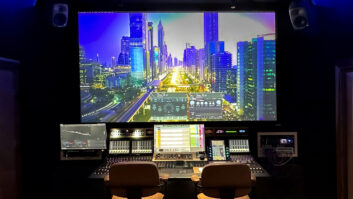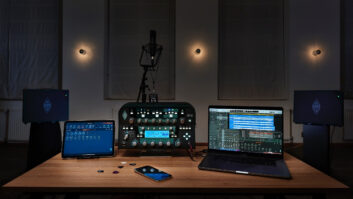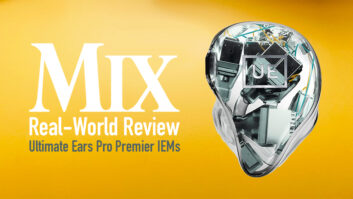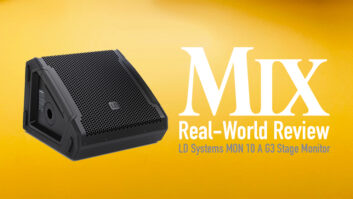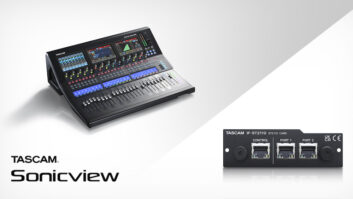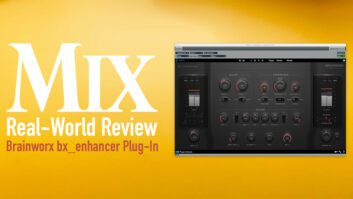
Some recent observations have gotten me thinking about how we as audio pros must adapt to gear as it becomes more capable. The price we pay is the learning curve, constructing new ways of working and, of course, experiencing some frustration.
advertisement
I recently had the opportunity to step outside my comfort zone and sit in front of a Studer Vista 9 console with Studer Technical Services Manager Paul Shorter, who took me through the system. The Vista 9 is deep because it needs to be capable of working in broadcast, theater, tour sound, music production and just about anywhere else. On the surface it looks and is user-friendly, but below the surface it is very complex. Take labels for instance: There are system labels, inherited device labels (!?) and user labels. The inputs are then mapped to virtual channels (from mono and up), which sit in vertical and horizontal layers that exceed the boundaries of your physical console. These are then assigned to channels on the surface, which can each have three separately switchable inputs. Amazing depth and power, but sound confusing? You’re feeling the price of capability.
Outside of console workflows, we all experience the expected DAW software updates, and the need to learn new interfaces as manufacturers stretch the boundaries of hardware and plug-in EQs, preamps, reverbs, compressors and other processors we use every day. However, there are other systems just released and coming soon that stretch the barriers of gear descriptions and offer new ways of working.
For instance, in February I hosted a Mix Webcast sponsored by Focusrite chronicling my use of its RedNet system in a live studio session (available On Demand at mixonline.com). The RedNet 1 through 5 interfaces offer analog, digital and Pro Tools HD I/O, which can then be networked over Cat-6 cable at great distances. Along with the setup of your DAW’s I/O interface, there is the Audinate Dante I/O GUI and the RedNet GUI to set up. Like the Vista 9’s labels, this is a one-time-per-workflow design that can be saved and altered offline for other uses on other systems. Very cool, but at first it is a mind-bending experience and certainly worth the price if you’re looking to network quality audio between stage, front of house, studio and more.
In some cases, another company’s hardware upgrades have spawned new systems for using plug-ins and applying processing within your DAW. At NAMM I sat with Waves product specialist Luke Smith, who took me through their new SoundGrid Server, which will provide the DSP for Waves AAX plugins on older Avid I/O cards and 96 and 192 I/Os, essentially extending the life of these products beyond Pro Tools 11, which is imminent and jumping to 64-bit operation. Waves promises latencies that are low enough to operate Waves plug-ins live and in tracking situations, not to mention during your mix.
In Waves’ own words, “The SoundGrid Server is the ‘number cruncher’, which performs the audio processing. Audio is streamed from the audio interface (e.g., WSG-Y16) to the server, gets processed at low latency, and is streamed back to the interface.” Smith explained that for tracking, the system runs audio from both the computer’s Ethernet port and Avid’s Digilink I/O, keeping the audio in the digital realm, which is how they promise low latency numbers. All that wired operation is simply plug-and-play—but to operate the system, you have to jump between your DAW’s GUI to Waves’ MultiRack SoundGrid host application, where you instantiate and interact with your plug-ins.
Again, this is the price of capability. What this buys you is the ability to keep your currently running Pro Tools HD system intact without having to upgrade your computer, older Avid cards and I/Os, which are all going the way of the dodo. The SoundGrid’s price is not set and it is still in development, but compared to a system upgrade, it will save you dollars. Also, Waves is all-in with SoundGrid, meaning you won’t be able to access Waves AAX plug-ins outside of this system, even with new Avid HDX cards.
So, what does all this mean for us? Or as my friend and Mix writer Bobby Frasier says, “Because ultimately this is all about me!” All these new technologies, steeper learning curves and accompanying frustration is exciting because it brings speed, positive workflow changes and the ability to stretch the life of older gear, which all result in more $$ in your pocket—and that doesn’t suck.

